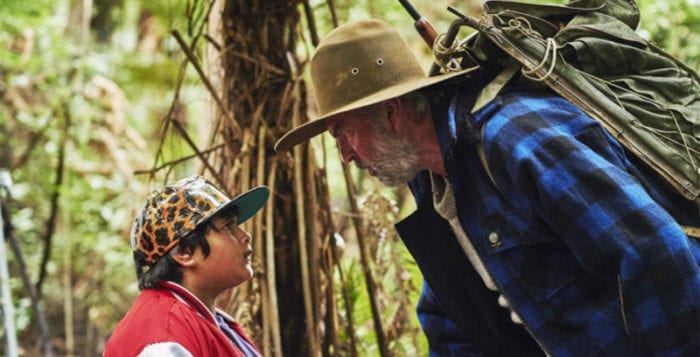By David Dunaief, MD
Osteoporosis is a complex disease. For one thing, it progresses with no symptoms, until the more severe stage of fractures that cause potential disability and increase mortality. For another, the only symptoms are from the treatment with medications, better known as side effects. Third, lifestyle modifications and supplements, while important, require adherence to a regimen.
I am not a big advocate of medication, as I am sure you have gathered from my previous articles; however, medication does have its place. There are studies that show benefit from the two main classes for osteoporosis, bisphosphonates such as alendronate (Fosamax, though it is now generic) and the newer class that involves monoclonal antibodies such as denosumab (Prolia). And, of course, I am a big advocate of lifestyle modifications including diet, exercise, smoking cessation and even some supplements. The side effects of these modifications are better health outcomes for chronic diseases and disorders in general. What I can’t advocate for, as a physician sworn to help people, is the new emerging cohort that I refer to as the “do-nothing group.”
Recently, a New York Times article on June 1, 2016, entitled, “Fearing Drugs’ Rare Side Effects, Millions Take Their Chances With Osteoporosis,” reported that prescriptions for medications to treat the disease have fallen by more than 50 percent from 2008 to 2012 because of the fear of the side effect profile that include rare instances of atypical fractures and jawbone necrosis (1).
In the article, one doctor mentions that patients prefer diet and exercise, but that it does not work. Well, he may be partially correct. Diet and exercise may not work if they’re not implemented. However, if people actually make lifestyle modifications, there could be substantial benefit. Just to give up on the medications for osteoporosis or to refuse to take them is not going to improve your chances or reduce your risk of getting fractures in the spine, hip, wrist or other locations. In other words, the “do-nothing” approach won’t help and may significantly increase your risk of fracture and other complications, such as death.
At the top of the list of risk factors for osteoporosis is nontraumatic fractures — in other words, breaking of bone with low-impact events. In this case, once you have had a fracture, the probability of having a recurrent or subsequent fracture increases more than three times in the first year, according to a recent Icelandic study (2). Lest you think that you are in the clear after a year since your first fracture: After 10 years, the risk of subsequent fracture still remains high, with a twofold increased risk.
Osteoporosis involves bone loss. We typically measure this through the bone mineral density (BMD) biomarker using a DXA scan. However, another component is bone quality. Sarcopenia, or loss of lean muscle mass, may play a role in bone quality. There are vitamins, such as vitamin K2, that can have beneficial effects on bone based on bone quality as well. No, this is not the same as the more well-known vitamin K1 used in clotting, which may also have a smaller benefit in preserving bone.
Let’s look at the evidence.
Avoiding sacropenia
Sarcopenia is a fancy word for a depressing phenomenon that occurs as we age and become more and more sedentary; it is the loss of lean skeletal muscle mass at the rate of 3 to 8 percent each consecutive decade after 30 and also loss of strength (3). It may have significant effects on about one-third of those over age 60 and half of those over 80. Unless, of course, you are physically active on a regular basis. In the Study for Osteoporotic Fractures in Men, results show that sarcopenia plus osteoporosis, taken together, increases the risk of fracture more than three times in older men (4).
The researchers assessed muscle wasting by using the European Working Group on Sarcopenia in Older Patients (EWGSOP), which takes into account weakness (grip strength <20 kg for men), slowness (walking=0.8 m/s) and low lean muscle mass (< 20 percent). This involved over 5,000 men with a mean age of about 74. The group with sarcopenia had significantly lower grip strength and was less physically active. In another study, those who were healthy 65-year-old adults who had sarcopenia or low lean muscle mass were at a greater than two times risk of experiencing a low-trauma fracture within three years (5). This was according to the EWGSOP1 cutoff criteria for sarcopenia.
Preventing sarcopenia
Well, beyond the obvious of physical activity and formal exercise, there is a medication that has potentially shown positive results. This is the bisphosphonate alendronate (Fosamax). In a study, results showed that alendronate increased muscle mass significantly over a one-year period (6). In the appendicular (locomotive) skeletal muscle, there was a 2.5 times increase in muscle mass, while in lower limb muscle mass there was a greater than four times increase. This was a retrospective (backward-looking), case-control study involving about 400 participants. While these results are encouraging, we need a prospective (forward-looking), randomized controlled trial. For those who don’t want to or can’t for some reason exercise, then medication may help with muscle mass.
Exercise! Exercise! Exercise!
In a meta-analysis (a group of 10 trials), results showed there was a significant 51 percent reduction in the risk of overall fracture in postmenopausal women who exercised (7). This study involve over 1,400 participants. Does exercise intensity matter? Fortunately, the answer is no. If you like jogging or running, that’s great, but walking was also beneficial. This is important, since you want to do the type of activity that is more enjoyable to you, especially since the benefit of exercise dissipates when you stop doing it regularly (8).
The importance of K2
In a recent study, vitamin K2 was shown to reduce the risk of hip fracture by 60 percent, vertebral fracture by 77 percent and nonvertebral fractures by a whopping 81 percent (9). According to the authors, this benefit may be derived from bone strength (BMC, or bone mineral content) rather than from bone mineral density (BMD). There were 325 postmenopausal women in this study. It was a randomized controlled trial with one group receiving vitamin K2 (MK-4, menatetrenone) supplementation of 45 mg/day and the other a placebo group.
Don’t forget fruits and vegetables
In the Singapore Chinese Health Study, a prospective population-based study, results showed that there was a 34 percent reduction in the risk of hip fracture in the highest quintile of vegetable-fruit-soy (VFS) intake, compared to the lowest quintile (10). This study involved over 63,000 men, premenopausal and postmenopausal women with an age range from 45 to 74 years old. The results showed a dose-dependent curve, meaning the more VFS, the higher the reduction in hip fracture risk. Interestingly, there was no difference in risk of fracture when meat in the form of meat dim-sum was used instead of plant-based protein. The researchers concluded that an Asian plant-based diet may help reduce the risk of hip fracture. I’m not saying to take medications for osteoporosis, but you need to do something — either medications, lifestyle modifications, supplements or all three — especially if you have a history of low-trauma fractures, because your risks of disability, complications and death increase significantly with subsequent fractures. But, do not be part of the growing “do-nothing” group.
References:
(1) J Bone Miner Res. 2015;30(12):2179-2187. (2) World Congress on Osteoporosis, Osteoarthritis and Musculoskeletal Diseases 2016. Abstract 0C35. (3) Curr Opin Clin Nutr Metab Care. 2009; 12(1):86–90. (4) American Society of Bone and Mineral Research 2013. Abstract 1026. (5) Age Ageing.2010;39:412-423. (6) Osteoporos Sarcopenia. 2015;1(1):53-58. (7) Osteoporos Int. 2013;24(7):1937. (8) Ann Intern Med. 1988;108(6):824. (9) Osteoporos Int. 2007;18(7):963-972. (10) J Nutr. 2014;144(4):511-518.
Dr. Dunaief is a speaker, author and local lifestyle medicine physician focusing on the integration of medicine, nutrition, fitness and stress management. For further information, visit www.medicalcompassmd.com or consult your personal physician.

















